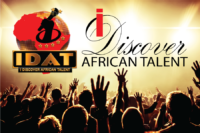
Democracy is slowly being reestablished after the civil war from 1991 to 2002 that resulted in tens of thousands of deaths and the displacement of more than 2 million people (about a third of the population). The military, which took over full responsibility for security following the departure of UN peacekeepers at the end of 2005, is increasingly developing as a guarantor of the country’s stability. The armed forces remained on the sideline during the 2007 and 2012 national elections, and over the past year have deployed over 850 peacekeepers in the African Union Mission in Somalia (AMISOM). As of January 2014, Sierra Leone also fielded 122 staff for five UN peacekeeping missions. In March 2014, the closure of the UN Integrated Peacebuilding Office in Sierra Leone (UNIPSIL) marked the end of more than 15 years of peacekeeping and political operations in Sierra Leone. The government’s priorities include furthering development, creating jobs, and stamping out endemic corruption.
Capital: Freetown
Government: Constitutional Democracy
Economy:
- While Sierra Leone possesses substantial mineral, agricultural, and fishery resources, it’s physical and social infrastructure has yet to recover from the civil war, and serious social disorders continue to hamper economic development.
- Nearly half of the working-age population engages in subsistence agriculture.
Population: 6 million (UN 2011)
Land Size: 71,740 sq km (27,669 sq miles)
Major Ethic Groups:
- Temne: 35%
- Mende: 31%
- Limba: 8%
- Kono: 5%
- Kriole: 2% (descendants of freed Jamaican slaves who were settled in the Freetown area in the late-18th century; also known as Krio)
- Mandingo: 2%
- Loko: 2%
- Other: 15% (includes refugees from Liberia’s recent civil war, and small numbers of Europeans, Lebanese, Pakistanis, and Indians)
Religions:
- Muslim: 60%
- Christian: 10%
- Indigenous beliefs: 30%
Language(s):
- English (official, regular use limited to literate minority)
- Mende (principle vernacular in the south)
- Temne (principle vernacular in the north)
- Krio (English based Creole, spoken by the descendants of freed Jamaican slaves who were settled in the Freetown area, a lingua franca and a first language for 10% of the population but understood by 95%)
For more information about Sierra Leone, please visit:
https://www.cia.gov/library/publications/the-world-factbook/geos/sl.html

Leave a Reply
You must be logged in to post a comment.